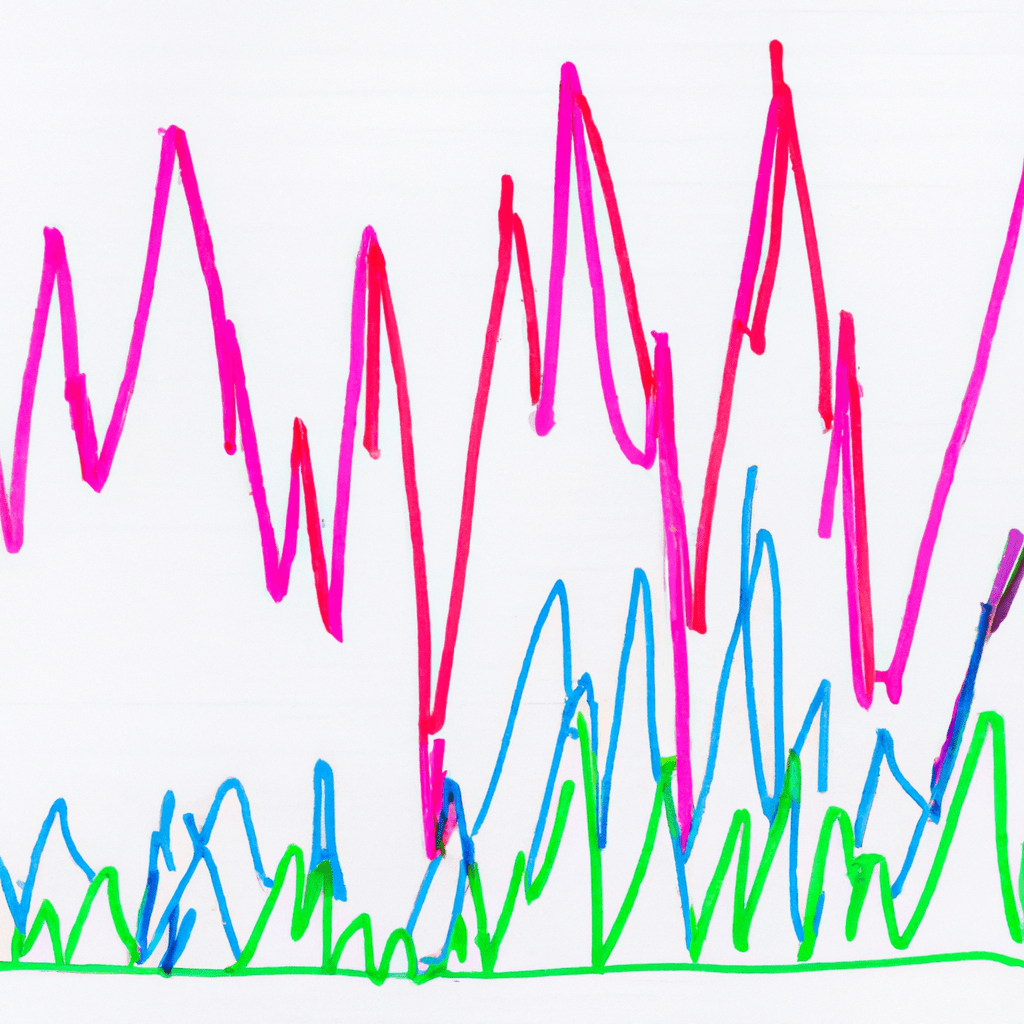In today's ever-evolving financial landscape, it is essential for investors and traders to have a comprehensive understanding of financial derivatives. These complex instruments, such as futures contracts and options, have become increasingly popular in recent years due to their potential for high returns. Whether you are a beginner or an experienced investor, this article aims to provide you with a beginner's guide to financial derivatives, specifically focusing on futures contracts and options trading. We will explore the world of stock derivatives, explain how futures and options trading works, and provide strategies for successful futures options trading. So, if you are looking to maximize your profits and navigate the world of financial derivatives, this article is the perfect starting point for you.
1. A Beginner’s Guide to Financial Derivatives: Understanding Futures Contracts and Options Trading

Financial derivatives are complex instruments that have become increasingly popular in the world of finance. For beginners, understanding the basics of financial derivatives, such as futures contracts and options trading, can be a daunting task. However, with a little guidance, anyone can grasp the fundamental concepts of these instruments.
Let's start with futures contracts. A futures contract is a standardized agreement between two parties to buy or sell an asset, such as stocks, commodities, or currencies, at a predetermined price and date in the future. The key feature of futures contracts is that they are traded on exchanges, providing liquidity and transparency to the market participants.
For example, imagine you are an investor who wants to purchase 100 shares of a particular stock. Instead of buying the shares directly, you can enter into a futures contract, which obligates you to buy the shares at a specified price and date in the future. This allows you to have exposure to the underlying asset without actually owning it.
Options trading, on the other hand, provides the buyer with the right, but not the obligation, to buy or sell an asset at a predetermined price within a specified timeframe. There are two types of options: call options and put options. A call option gives the buyer the right to buy an asset, while a put option gives the buyer the right to sell an asset.
Let's say you expect the price of a stock to rise in the near future. You can purchase a call option on that stock, which gives you the right to buy it at a predetermined price within a specific time period. If the stock price indeed rises, you can exercise your option and profit from the price difference. However, if the stock price falls, you can choose not to exercise the option, limiting your loss to the premium paid for the option.
Both futures contracts and options trading are widely used by investors and traders to hedge risk, speculate on price movements, and enhance their investment strategies. They offer flexibility, leverage, and the potential for significant returns. However, it's important to note that these instruments also carry a higher degree of risk compared to traditional investments.
To get started with futures and options trading, beginners should first educate themselves about the underlying assets, market dynamics, and the various strategies involved. It's crucial to understand the risks associated with these instruments and employ risk management techniques to protect your investments.
In conclusion, financial derivatives, including futures contracts and options trading, are powerful tools that allow investors to manage risk and potentially generate profits. While they may seem complex at first, a beginner's guide can provide the necessary foundation to navigate the world of futures and options. By understanding the basics and employing sound risk management practices, beginners can begin their journey into the exciting world of stock derivatives and futures options trading.
2. Exploring the World of Stock Derivatives: Futures & Options Trading Made Simple

Financial derivatives are complex financial instruments that derive their value from an underlying asset or security. They can be used for a variety of purposes, including hedging against market risks, speculating on price movements, or enhancing investment returns. One popular type of financial derivative is the futures contract.
A futures contract is a legally binding agreement between two parties to buy or sell an asset at a predetermined price on a future date. It allows investors to speculate on the future price of an asset without actually owning it. For beginners, futures trading can be a bit overwhelming, but with a basic understanding, it can be a lucrative investment strategy.
Futures trading involves buying or selling contracts that represent a specific quantity of an underlying asset, such as stocks, commodities, or currencies. These contracts are standardized and traded on organized exchanges, making them highly liquid and transparent. This makes futures trading more accessible to individual investors, as they can enter and exit positions easily.
One of the key benefits of futures trading is leverage. By using leverage, investors can control a larger position with a smaller amount of capital. However, leverage can amplify both profits and losses, making risk management crucial in futures trading. It is important for beginners to start with a clear understanding of their risk tolerance and develop a solid risk management strategy.
Options trading is another popular form of stock derivatives. Unlike futures contracts, options provide the right, but not the obligation, to buy or sell an asset at a predetermined price within a specified time period. Options can be used for hedging, generating income, or speculating on price movements.
Options trading can be a bit more complex than futures trading, as it involves various strategies such as buying calls, selling puts, or implementing spreads. However, with the right knowledge and guidance, beginners can navigate the world of options trading and potentially benefit from its versatility.
When engaging in futures and options trading, it is crucial for beginners to educate themselves about the basics, understand the risks involved, and develop a trading plan. There are numerous resources available, including online courses, books, and seminars, that can provide valuable insights into futures and options trading.
In conclusion, stock derivatives such as futures and options offer investors the opportunity to participate in the financial markets in a more flexible and efficient manner. While it may seem daunting for beginners, with the right knowledge and guidance, futures and options trading can be a valuable addition to an investment portfolio.
3. Maximizing Profits with Financial Derivatives: Strategies for Successful Futures Options Trading

When it comes to maximizing profits with financial derivatives, particularly in the realm of futures options trading, employing effective strategies is crucial. Futures options are contracts that give traders the right, but not the obligation, to buy or sell an underlying asset at a predetermined price and date in the future. These derivatives enable investors to speculate on the price movements of various assets, including commodities, currencies, and stocks.
For beginners entering the world of futures options trading, it is essential to understand the basic concepts and strategies to ensure successful outcomes. This beginner's guide to futures options trading aims to provide insights into various strategies that can help maximize profits.
1. Hedging: One common strategy employed by traders is hedging. Hedging involves taking a position in the futures market that is opposite to an existing or anticipated position in the underlying asset. By doing so, traders can protect themselves against potential losses resulting from adverse price movements. For example, if an investor holds a portfolio of stocks and anticipates a market downturn, they can hedge their position by buying futures options contracts or selling futures contracts on an index correlated with their portfolio. This way, any losses incurred in the stock market can be offset by gains in the futures market.
2. Speculation: Speculation is another strategy utilized by traders aiming to maximize profits. In this approach, traders take positions in futures options based on their anticipation of future price movements in the underlying asset. If a trader expects the price of a particular commodity, such as oil or gold, to rise, they can purchase call options or sell put options to profit from the price increase. Conversely, if they anticipate a price decline, they can buy put options or sell call options. Speculation involves assessing market trends, analyzing fundamental and technical indicators, and making informed predictions about future price movements.
3. Spread Trading: Spread trading involves simultaneously taking two opposite positions in different futures contracts or options on the same underlying asset. Traders use this strategy to profit from the price difference between these contracts. One common spread trading strategy is the calendar spread, where traders take opposite positions in futures contracts with different expiration dates. This strategy allows traders to benefit from the price convergence or divergence of these contracts over time. Another type of spread trading is the intercommodity spread, where traders take opposite positions in related contracts of different commodities, such as gold and silver or corn and wheat. By analyzing market trends and price relationships, spread traders aim to capitalize on the price differentials between these commodities.
Successful futures options trading requires a deep understanding of market dynamics, risk management, and the application of effective strategies. Traders should continuously educate themselves, stay informed about market developments, and undertake thorough analysis before entering any trade. By employing these strategies and keeping a close eye on market conditions, traders can maximize their profits and navigate the complex world of financial derivatives successfully.
In conclusion, financial derivatives such as futures contracts and options trading offer beginners a valuable opportunity to enter the world of stock derivatives. This beginner's guide has provided a comprehensive understanding of the basics of financial derivatives, including their definition, types, and strategies for successful trading. By exploring the world of stock derivatives and maximizing profits through futures options trading, investors can enhance their financial portfolios and potentially achieve significant gains. With the knowledge gained from this article, beginners can confidently navigate the complex world of financial derivatives and make informed investment decisions. Whether one is a novice investor or a seasoned trader, understanding the intricacies of financial derivatives is essential for long-term success in the market. So, take the first step towards financial growth by delving into the world of futures & options trading and reaping the benefits of stock derivatives.





